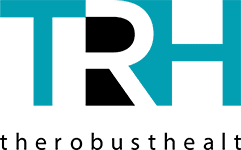Digital Asset Management (DAM) systems have become essential tools for creative and marketing teams to manage and organize their digital assets such as images, videos, and documents. In this article, we will discuss the benefits of DAM for creative and marketing teams and how it can improve their workflows and processes.
Benefits of DAM for Creative and Marketing Teams
DAM systems offer several benefits for creative and marketing teams, including:
Improved Collaboration
DAM systems enable creative and marketing teams to collaborate more effectively by providing a central repository for digital assets that can be accessed by all team members. This eliminates the need for multiple copies of the same asset and ensures that team members are working with the most up-to-date versions.
Increased Efficiency
DAM systems enable creative and marketing teams to work more efficiently by streamlining their workflows and processes. Teams can easily search for and find the assets they need, and can quickly download or share those assets with others.
Brand Consistency
DAM systems enable creative and marketing teams to maintain brand consistency by providing a central location for approved brand assets such as logos, fonts, and colors. This ensures that all team members are using the correct assets and adhering to brand guidelines.
Asset Tracking and Analytics
DAM systems enable creative and marketing teams to track the usage and performance of their digital assets, providing valuable insights into how they are being used and their impact on the organization. This information can be used to optimize asset management processes and improve the overall effectiveness of their digital assets.
Best Practices for Using DAM in Creative and Marketing Workflows
To get the most out of DAM systems in creative and marketing workflows, teams should follow these best practices:
Define Naming Conventions
Teams should define naming conventions for their digital assets to ensure that they are easy to find and use. Consistent and descriptive names can help team members quickly identify the assets they need and avoid creating duplicate assets.
Establish Metadata Standards
Teams should establish metadata standards for their digital assets to ensure that they are properly tagged and categorized. Metadata can help team members search for and find the assets they need, and can also provide valuable insights into asset usage and performance.
Establish Approval Processes
Teams should establish approval processes for new assets to ensure that they adhere to brand guidelines and are of high quality. This can help maintain brand consistency and ensure that only the best assets are used in marketing and creative projects.
Train Team Members
Teams should provide training to team members on how to use the DAM system effectively. This can include training on how to search for and find assets, how to upload and download assets, and how to use the analytics features to track asset usage and performance.
Choosing a DAM Solution for Creative and Marketing Teams
When choosing a DAM solution for creative and marketing teams, businesses should consider several factors, including:
Ease of Use
The DAM solution should be user-friendly and intuitive, with easy-to-use features and workflows that support the needs of creative and marketing teams.
Collaboration and Sharing
The DAM solution should enable teams to collaborate and share assets easily, with features such as commenting, versioning, and sharing permissions.
Customization and Branding
The DAM solution should be customizable and enable businesses to brand the user interface and workflows to align with their specific requirements and brand guidelines.
Asset Tracking and Analytics
The DAM solution should include features for tracking asset usage and performance, providing valuable insights into how assets are being used and their impact on the organization.
Integration with Creative and Marketing Tools
When choosing a DAM solution for creative and marketing teams, it’s important to consider how well it integrates with other tools used by these teams. Integration with tools such as Adobe Creative Suite and marketing automation platforms can streamline workflows and enable teams to work more efficiently.
Role-Based Access Control
DAM solutions should provide role-based access control to ensure that team members have access only to the assets and features that are relevant to their roles. This can help prevent unauthorized access to sensitive assets and ensure that team members are working with the correct assets.
Compliance and Security
DAM solutions should comply with data privacy and security regulations and ensure that sensitive data is protected. Compliance with standards such as GDPR and HIPAA may be required depending on the type of assets being stored in the DAM system.
Scalability
DAM solutions should be scalable and able to grow with the organization’s needs. Businesses should consider their current and future requirements when choosing a DAM solution to ensure that it can accommodate their growing asset library and user base.
Cloud vs On-Premises Deployment
Businesses should also consider whether to deploy the DAM solution in the cloud or on-premises. Cloud deployment can provide greater flexibility and scalability, while on-premises deployment can provide greater control over security and compliance.
By considering these factors and choosing the right DAM solution for their needs, creative and marketing teams can realize the full benefits of digital asset management and optimize their workflows and processes.
AI-Powered Features
Some DAM solutions offer AI-powered features that can further enhance creative and marketing workflows. For example, AI-powered tagging can automatically tag and categorize digital assets, making them easier to find and use. AI-powered search can also help teams quickly find the assets they need, even if they don’t know the exact search terms.
Workflow Automation
Workflow automation features can also improve efficiency and streamline processes for creative and marketing teams. For example, automated approval workflows can ensure that assets are approved and ready for use more quickly, while automated version control can help prevent duplicate assets and confusion over which version is the most up-to-date.
By leveraging these advanced features, creative and marketing teams can save time and increase productivity, ultimately leading to more effective campaigns and better results for the organization.
Conclusion
DAM systems offer several benefits for creative and marketing teams, including improved collaboration, increased efficiency, brand consistency, and asset tracking and analytics. To get the most out of DAM systems, teams should follow best practices such as defining naming conventions, establishing metadata standards, establishing approval processes, and training.
I’m a best-selling author and leading authority in the world of cryptocurrency. I have been involved in the crypto community since 2012 and have helped numerous startups and organizations on blockchain strategy. I am a regular contributor to Forbes and CoinDesk, and my work has been featured in The Wall Street Journal, Bloomberg, Reuters, and other major media outlets. In addition to writing for publications, I am also a sought-after speaker on cryptocurrency and blockchain technology niches respectively.




